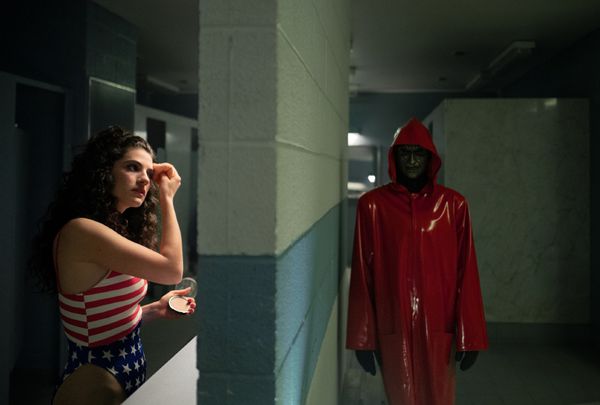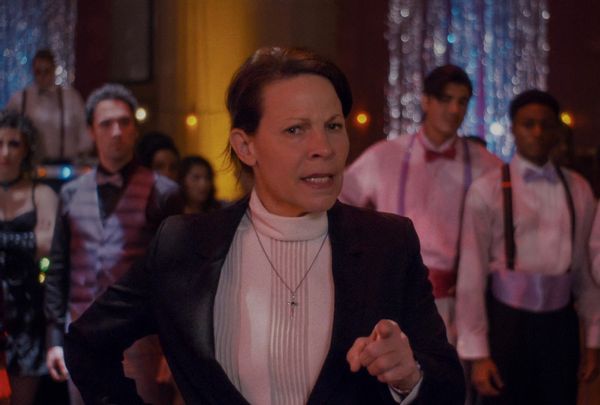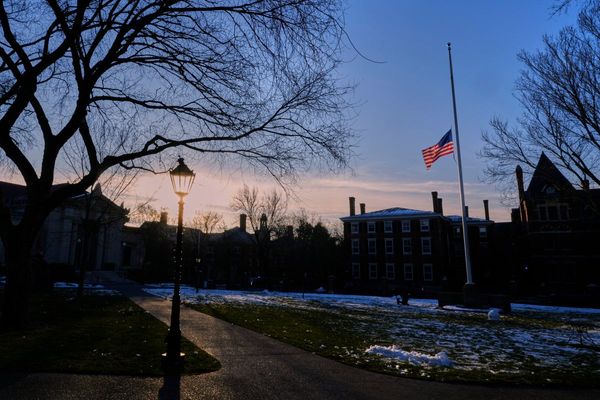
Prom and horror cinema share a rich enough relationship to sustain their own subgenre: “Carrie,” “Tragedy Girls,” “The Prowler,” Student Bodies,” “Texas Chainsaw Massacre: The Next Generation,” “Dance of the Dead” and, of course, the film wearing the crown, “Prom Night.” A customary end-of-year school dance makes a nice, chintzy locus for assembling a gang of characters in a single location, where they can each be picked off at the convenience of the night’s M.C. (master of carnage, in this case). As such, and given the source material, Netflix’s decision to follow up “Fear Street: 1666,” the concluding chapter of its “Fear Street” slasher series, with a party is sensible.
But how the streamer and newcomer Matt Palmer approach “Fear Street: Prom Queen” makes no sense. “Prom Queen,” unlike the first three “Fear Street” movies – each distinguished annually, from “1994” to “1978” to “1666,” and each directed by Leigh Janiak – directly adapts the same-named book from author R.L. Stine’s bibliography, “The Prom Queen,” logline more or less intact: Shadyside High is revving up for the prom, and everyone’s excited, including a maniac decked out in a grim visaged mask and a crimson latex coat, stalking prom queen candidates in the school’s hallways with an ax. One by one, each would-be monarch loses her head, until the culprit is caught and exposed, “Scooby-Doo” style.
The order of operations in R.L. Stine’s calculus results in a largely aseptic affair on the page, but Netflix takes the responsibility of choreographing kids’ murders much more seriously. If no single death scene in “Fear Street: Prom Queen” matches the level of the superlative bread slicer kill from “Fear Street: 1994,” the movie makes creative enough use of circular saws and paper cutters to suffice and sustain audience interest. Thin character development hobbles the film’s pacing during moments where giving any of them a shred of an identity would’ve helped pass the time between kills; it’s a letdown that each cast member — apart from the fantastic Lili Taylor as VP Dolores Brekenridge — reads so anonymously, considering how efficiently Janiak’s films give personalities even to their minor supporting characters.

But it’s the thought process driving Palmer’s themes and plot here that’s frustrating. In contrast to Janiak’s trilogy films, “Fear Street: Prom Queen” is a shockingly retrograde piece of work, with no significant thought given to ideas about, among other things, class and sexual orientation, key pillars of “Fear Street: 1994” and “Fear Street: 1666.” Frankly, the film has so little on its mind in general that if a butcher’s cleaver slammed through its skull, it would strike cotton candy instead of gray matter.


Perhaps the problem is the timeline; “Fear Street: Prom Queen” takes place before the events of the first three “Fear Street” movies, where the Shadyside curse, responsible for turning everyday folks into psychotic killers, is ultimately broken. But “Fear Street: Prom Queen” treats the curse as an Easter egg and rests on a hazy formulation of human cruelty as its villain instead. Is this a story about the haves taking from the have-nots? Is it about the elites’ repressed insecurities over their merits? Palmer appears confident in the presumption that viewers will simply go along with it because that’s the pop culture compact of late, and while despising the rich is all fun and games, the exercise strikes as regressive when the routines are this rote.







